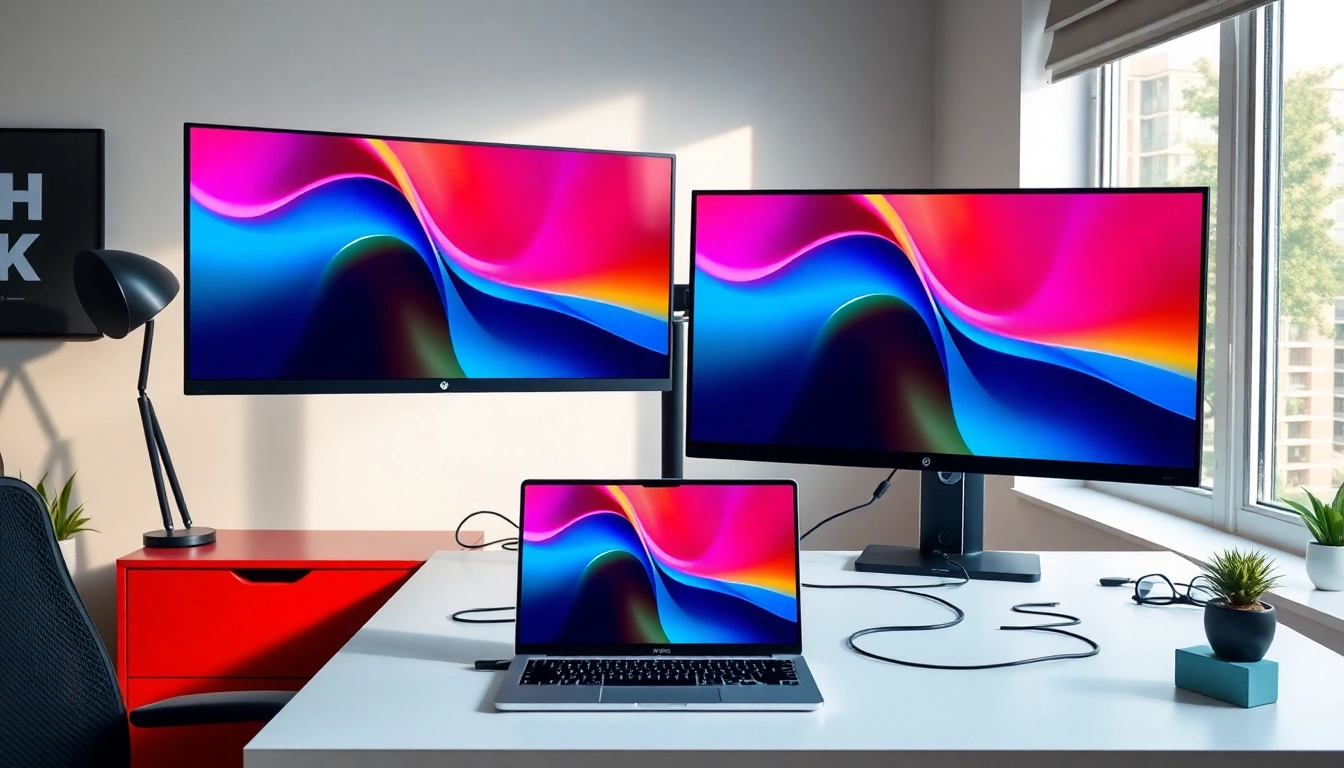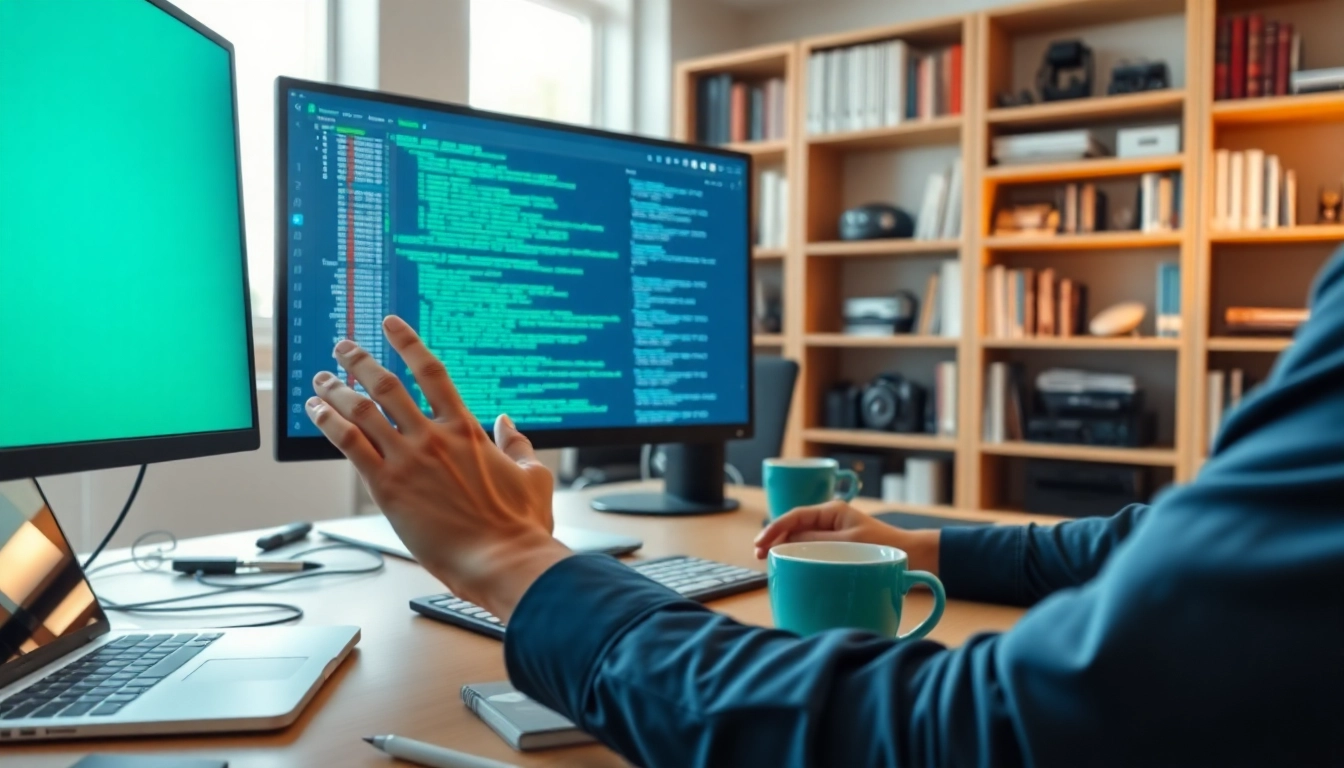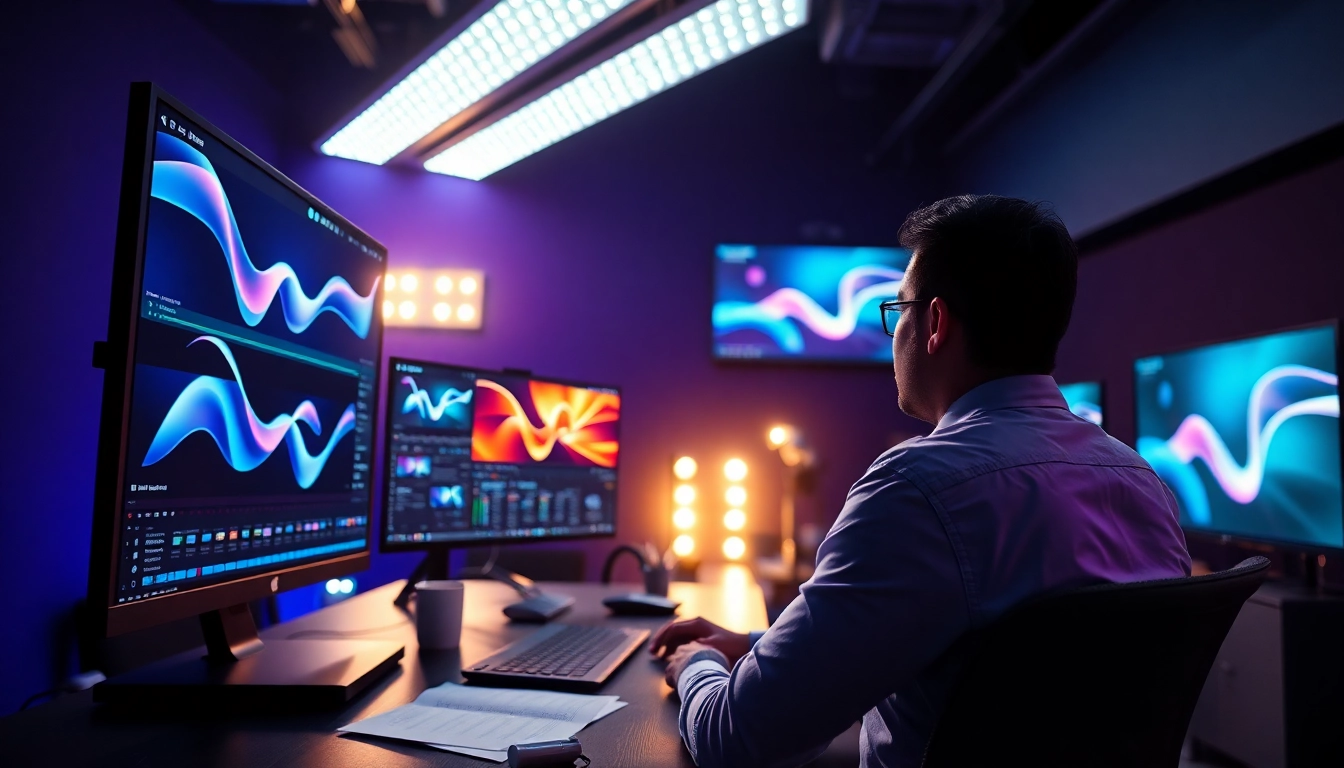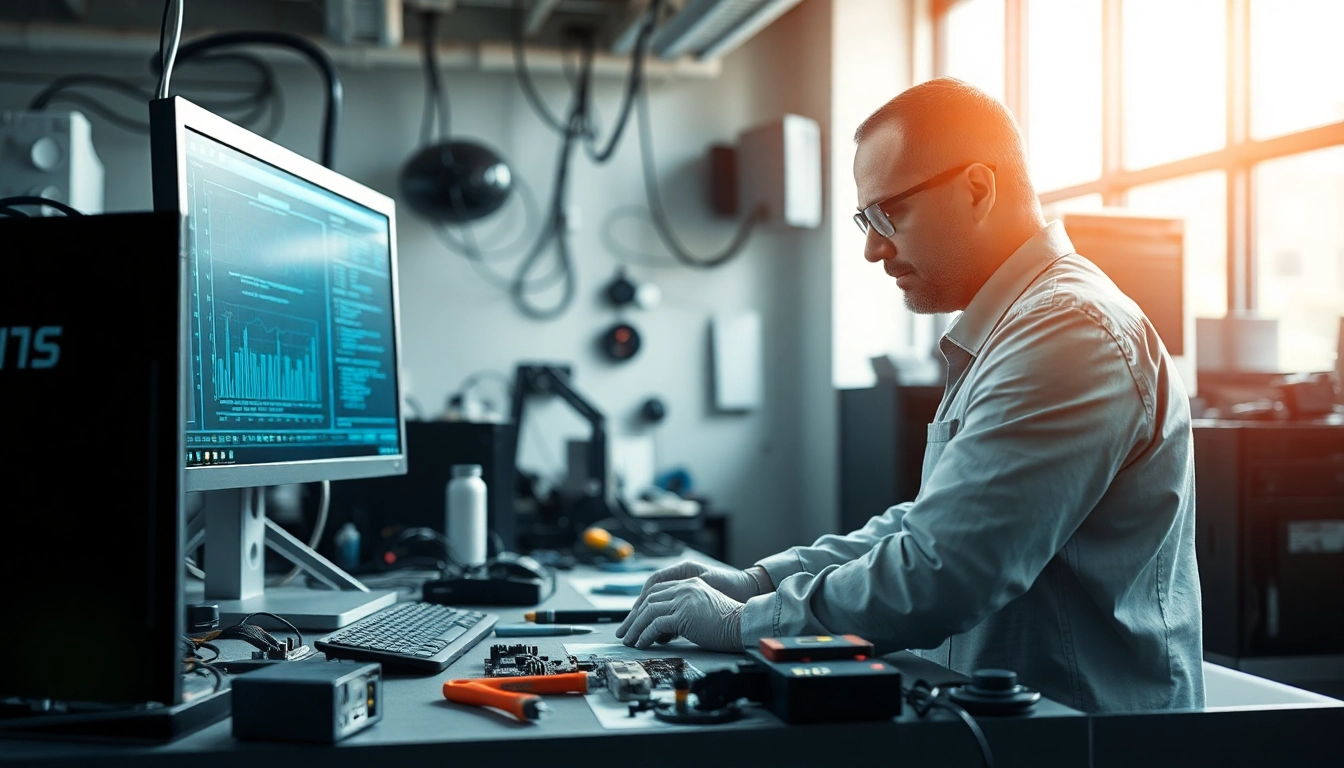Understanding Dual Monitors
In the contemporary world of digital interaction, maximizing productivity and efficiency has become essential for both professionals and home users alike. One of the most effective methods to achieve this is through a dual monitor install. This setup allows users to expand their display area, which can significantly enhance multitasking capabilities. But what precisely are dual monitors, and why are they beneficial?
Benefits of Dual Monitor Install
Installing dual monitors can dramatically improve user productivity, offering several advantages:
- Enhanced Workspace: With dual monitors, users can easily spread out applications, documents, and windows side-by-side, reducing the time spent toggling between tabs.
- Improved Focus: By dedicating one screen to specific tasks (like email or chat) and the other for primary work, distractions are minimized, leading to better concentration.
- Efficient Multitasking: Professionals in fields such as graphic design, video editing, coding, and data analysis benefit immensely from being able to reference material while simultaneously working on their primary tasks.
- Better Collaboration: Dual monitors allow for easier collaboration, as you can share one screen with colleagues during virtual meetings while keeping your work visible on the other.
- Customization: Users can tailor their workspace according to their workflow, whether it’s vertical stacking for coding or horizontal arrangement for design programs.
System Requirements for Dual Monitors
Before setting up dual monitors, it’s essential to confirm your computer’s compatibility:
- Graphics Card: Ensure your graphics card has enough ports to accommodate two monitors. Common outputs include HDMI, DisplayPort, and DVI.
- Operating System: Windows, MacOS, and Linux all support multiple displays, but the configuration steps may vary.
- Drivers: Up-to-date drivers are crucial for optimal performance, preventing issues with display recognition and resolution settings.
Types of Display Connections
When connecting two monitors, various display cables can be used, including:
- HDMI: Most modern monitors use HDMI for connectivity, offering excellent video and audio quality.
- DisplayPort: Often found in professional-grade monitors, DisplayPort can support higher resolutions than HDMI.
- DVI: An older standard largely replaced by HDMI and DisplayPort but still useful in certain setups.
- VGA: An analogue connection mainly used in older monitors—less common today due to the superior quality of digital connections.
Preparing for the Installation
Essential Equipment and Tools
To successfully set up a dual monitor installation, gather the following tools and equipment:
- Two Monitors: Choose monitors that suit your work needs—size, resolution, and panel technology (IPS, LED, etc.) matter.
- Appropriate Cables: Ensure you have the right cables for connecting your monitors based on the available ports.
- Power Strips: Adequate power outlets are vital to prevent overcrowding electrical sockets.
- Monitor Stands: If needed, stands can help adjust the height and angle of the monitors for ergonomic efficiency.
Pre-installation Checklist
Before diving into the dual monitor installation process, follow this checklist:
- Confirm that both monitors are functioning properly.
- Verify that your graphics card is compatible with multiple displays.
- Install necessary drivers beforehand to streamline the setup process.
- Clear your workspace to accommodate the new monitors.
Choosing the Right Monitor Setup
Decide how you want to arrange the monitors:
- Side by Side: Ideal for users who frequently manage multiple documents or applications.
- Stacked: Suitable for those who prefer having one monitor above the other, commonly used for coding or referencing materials.
- One Monitor as Primary: Use one monitor for tasks and the second as a supplementary display for notifications and applications.
Step-by-Step Dual Monitor Install
Connecting the Monitors
Once you’ve prepared everything, follow these steps to connect your monitors:
- Turn off your computer and unplug it for safety.
- Connect each monitor to the computer using the appropriate cables.
- Plug in the monitors and power them on before starting your PC.
Configuring Display Settings in Windows
After connecting the monitors, you will need to configure your display settings:
- Right-click on the desktop and select “Display settings”.
- Scroll down to “Multiple displays” and choose from options like “Extend these displays” or “Duplicate these displays” based on your preference.
- Click “Apply” to save the changes and adjust positioning according to your physical layout.
Adjusting Display Arrangements
Fine-tuning your display arrangements is key to smooth operation:
- Drag and drop the displayed monitors in the settings to reflect their real-world arrangement.
- Adjust the resolution for each display as needed, balancing clarity and performance.
- Utilize “Scale” settings to ensure text appears comfortably on each screen.
Troubleshooting Common Issues
Connection Problems
Issues can arise during setup. Here’s how to troubleshoot:
- Double-check cable connections to ensure they are secure.
- Verify that the correct input source is selected on the monitor.
- Restart your computer after changing settings to refresh connections.
Display Resolution and Settings Adjustments
If the displays appear blurry or improperly aligned, try the following:
- Access display settings and confirm that each monitor is set to its native resolution.
- Experiment with different scaling options to find the best fit for your eyes.
- Update drivers via the manufacturer’s website if issues persist.
Hardware Compatibility Issues
To address compatibility problems, consider these steps:
- Check your graphics card specifications to ensure it supports multi-display setups.
- Purchase a compatible graphics card if necessary, particularly for older machines.
- Utilize an HDMI splitter if needing to connect more displays than available ports, keeping in mind this will duplicate not extend the display.
Enhancing Your Dual Monitor Experience
Software Tools for Productivity
Various software tools can maximize the dual monitor experience:
- Window Management Tools: Applications like DisplayFusion or AquaSnap help manage windows across screens.
- Focus Assist: Windows has built-in features to reduce distractions from notifications and help maintain focus.
- Virtual Desktop Applications: Organize different tasks on separate virtual desktops accessible across your dual monitors.
Organizing Your Workspace
A well-organized workspace improves efficiency:
- Utilize vertical space by stacking monitors or using adjustable monitor arms to free up desk space.
- Incorporate cable management solutions to avoid a cluttered setup.
- Personalize your workspace with plants, art, or ergonomics-focused equipment like standing desks.
Best Practices for Multi-Monitor Workflows
For seamless multitasking, adhere to these best practices:
- Designate specific tasks for each monitor (e.g., communication on one screen, document editing on the other).
- Regularly assess your workflow to adapt monitor usage as your tasks evolve.
- Take breaks to reduce eye strain and prevent fatigue when working across extended screens.



